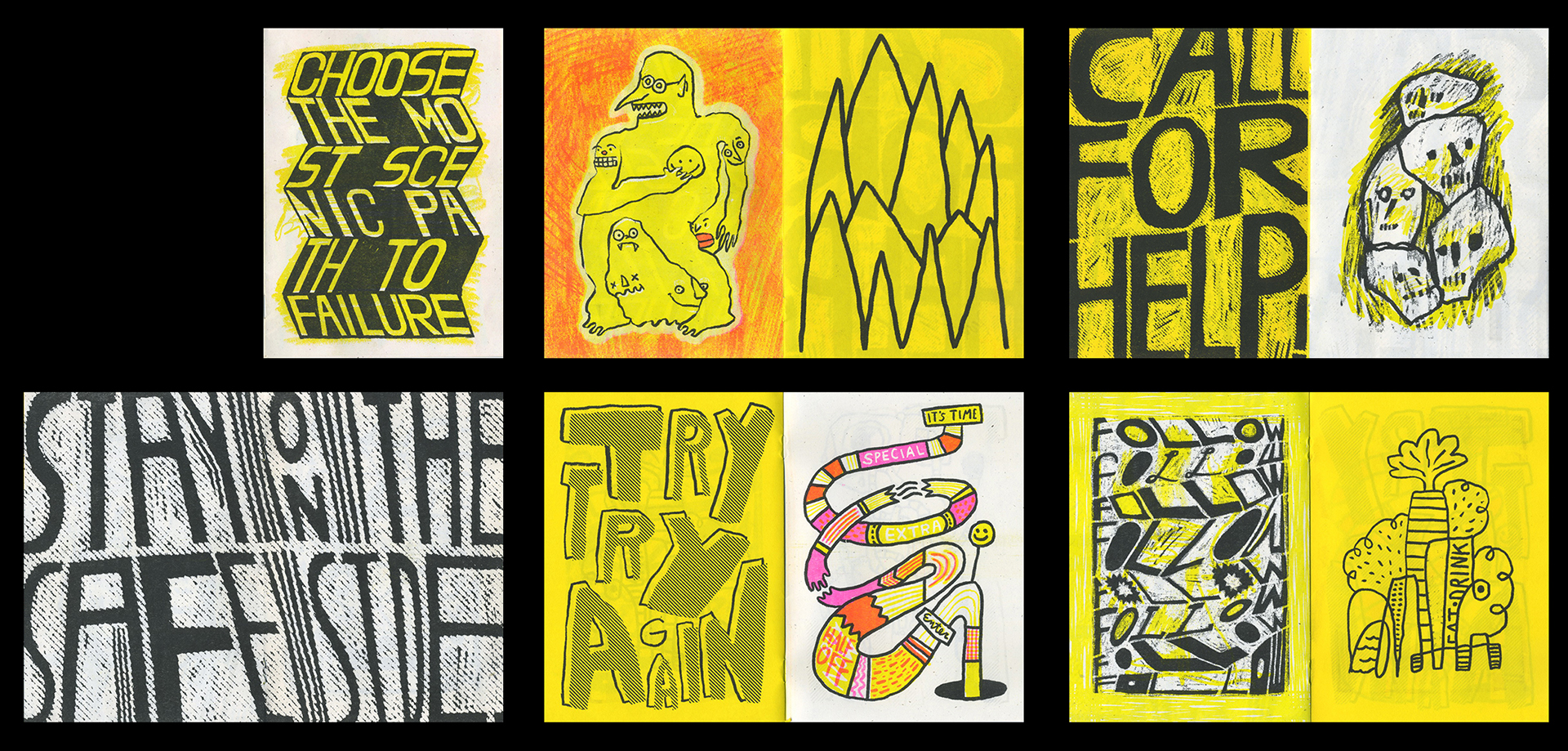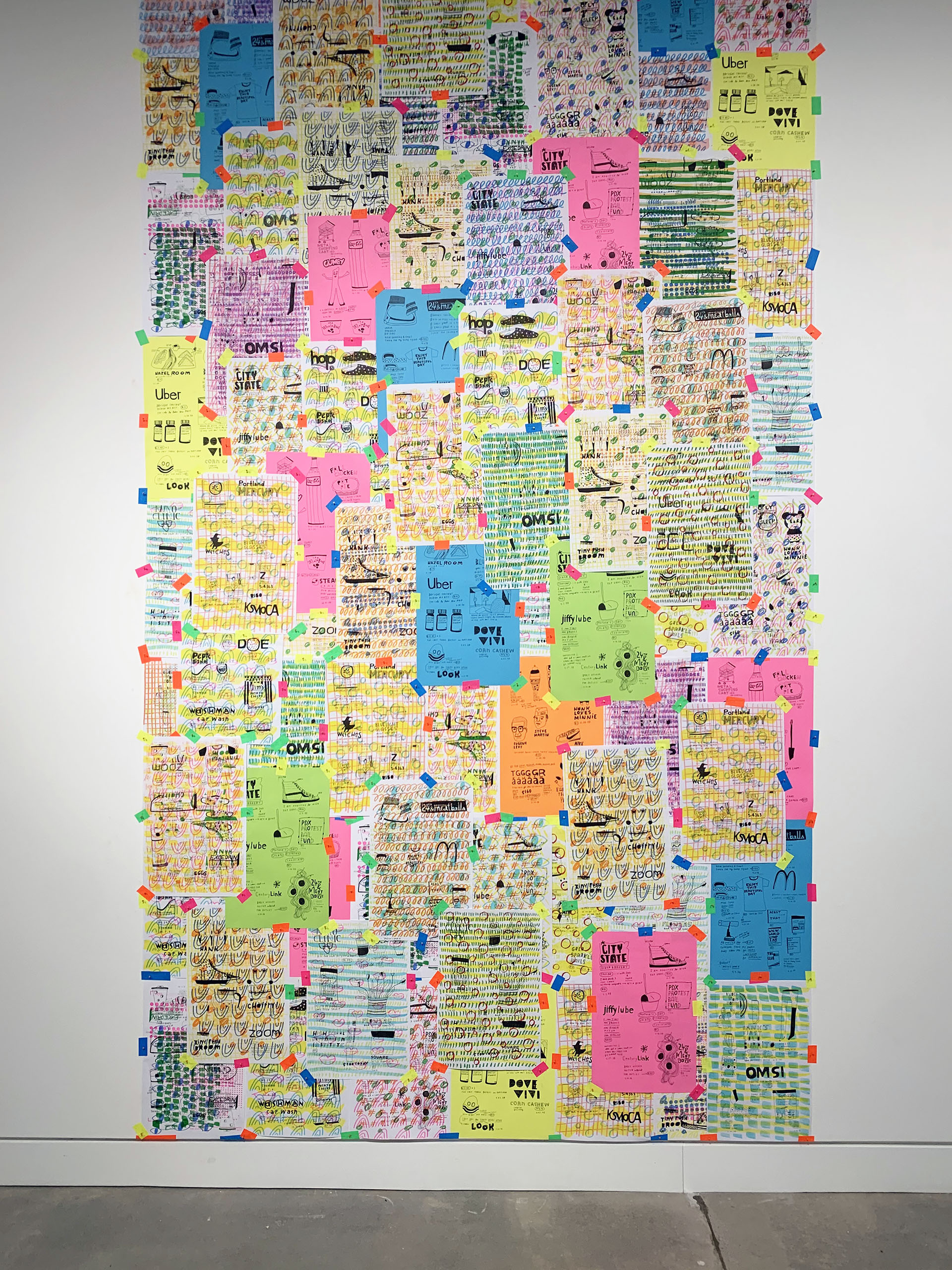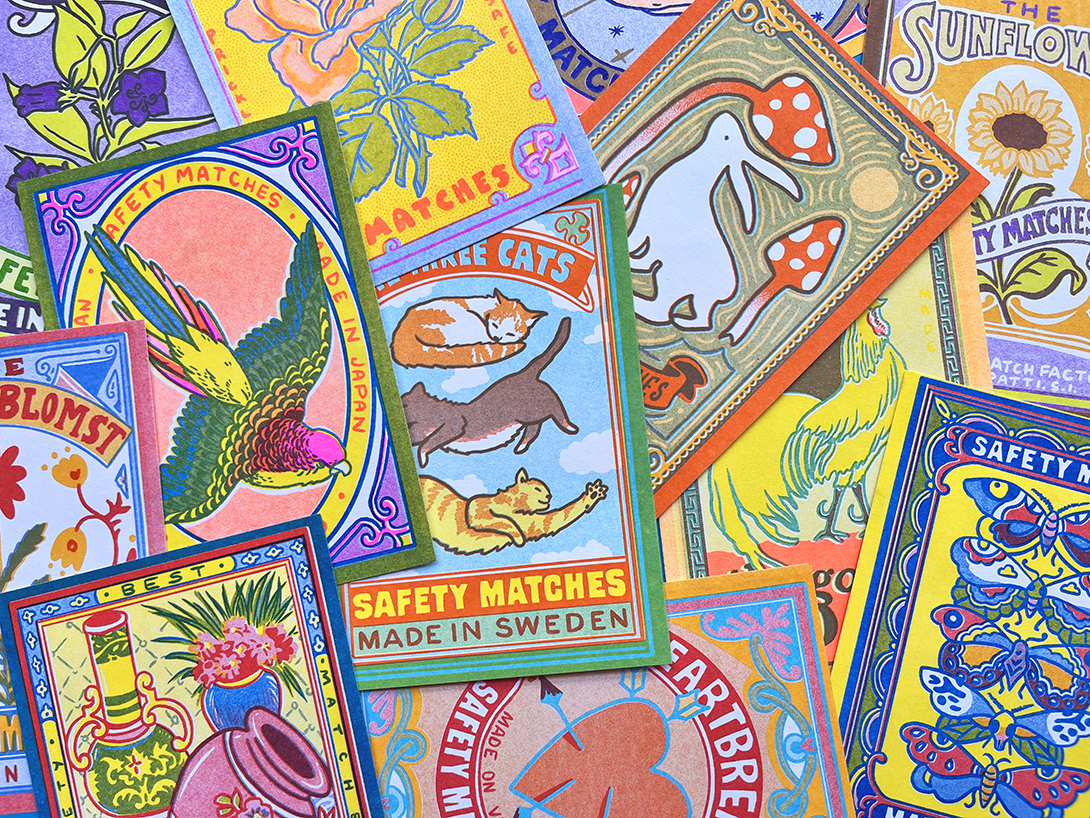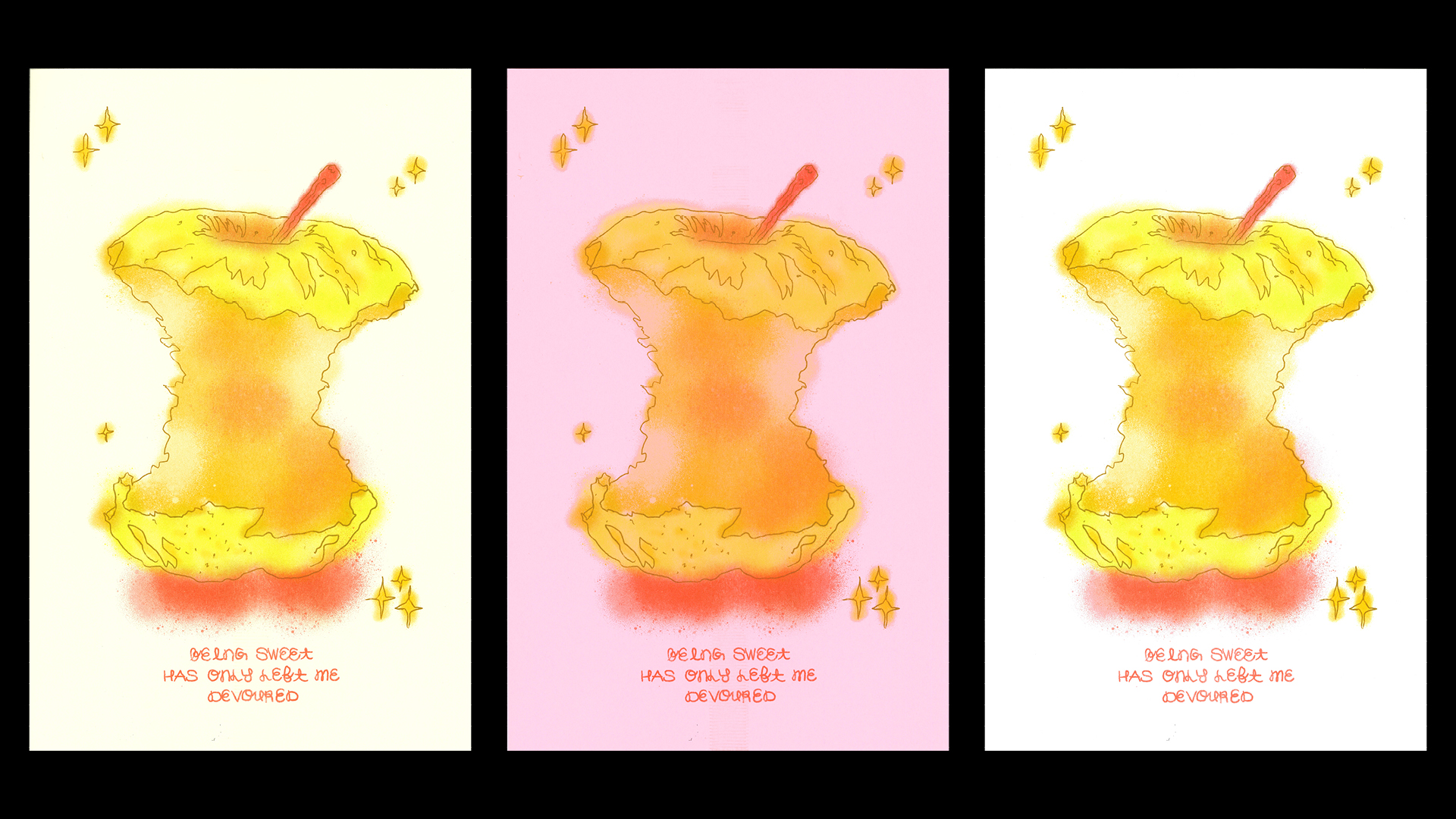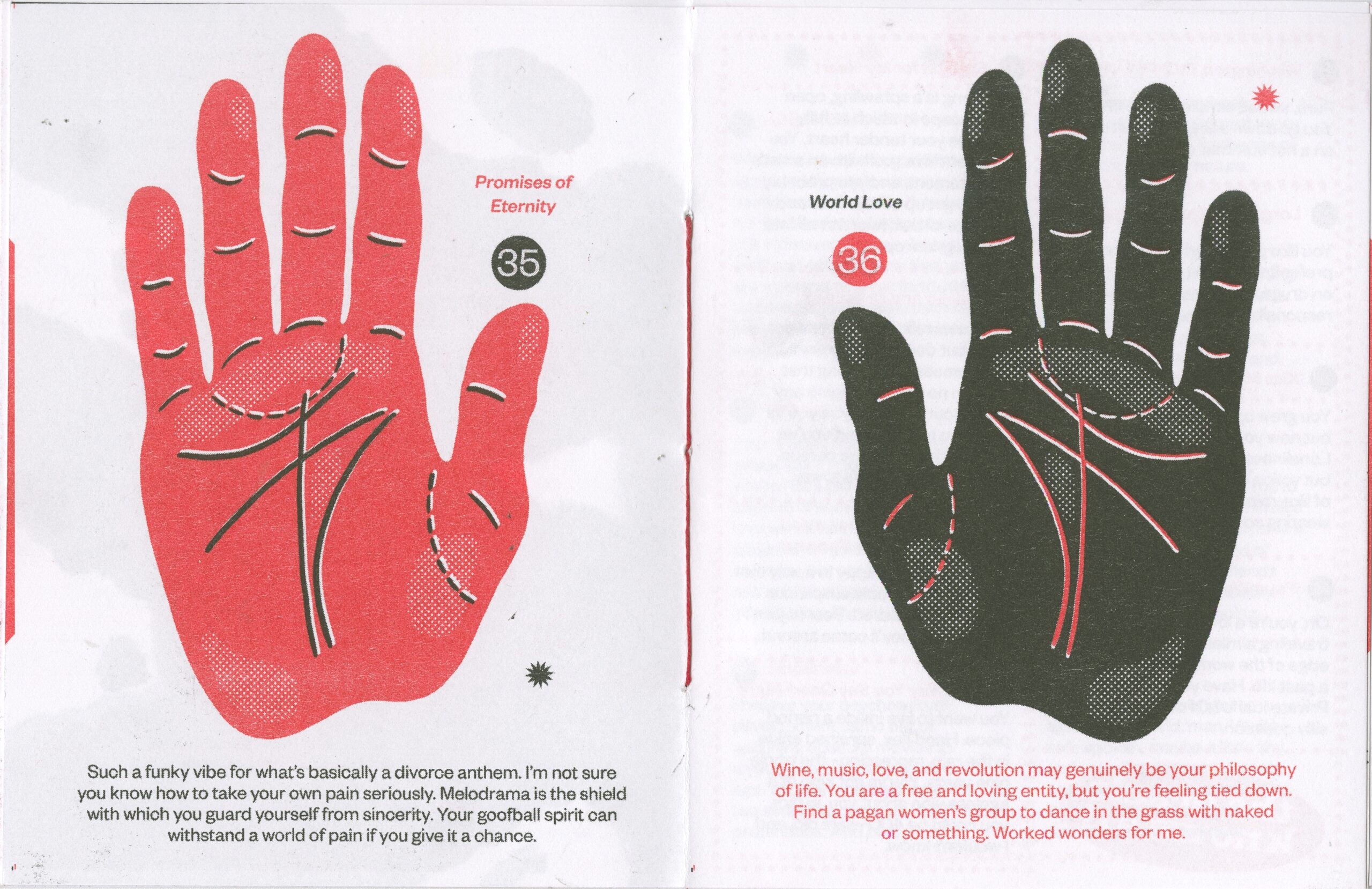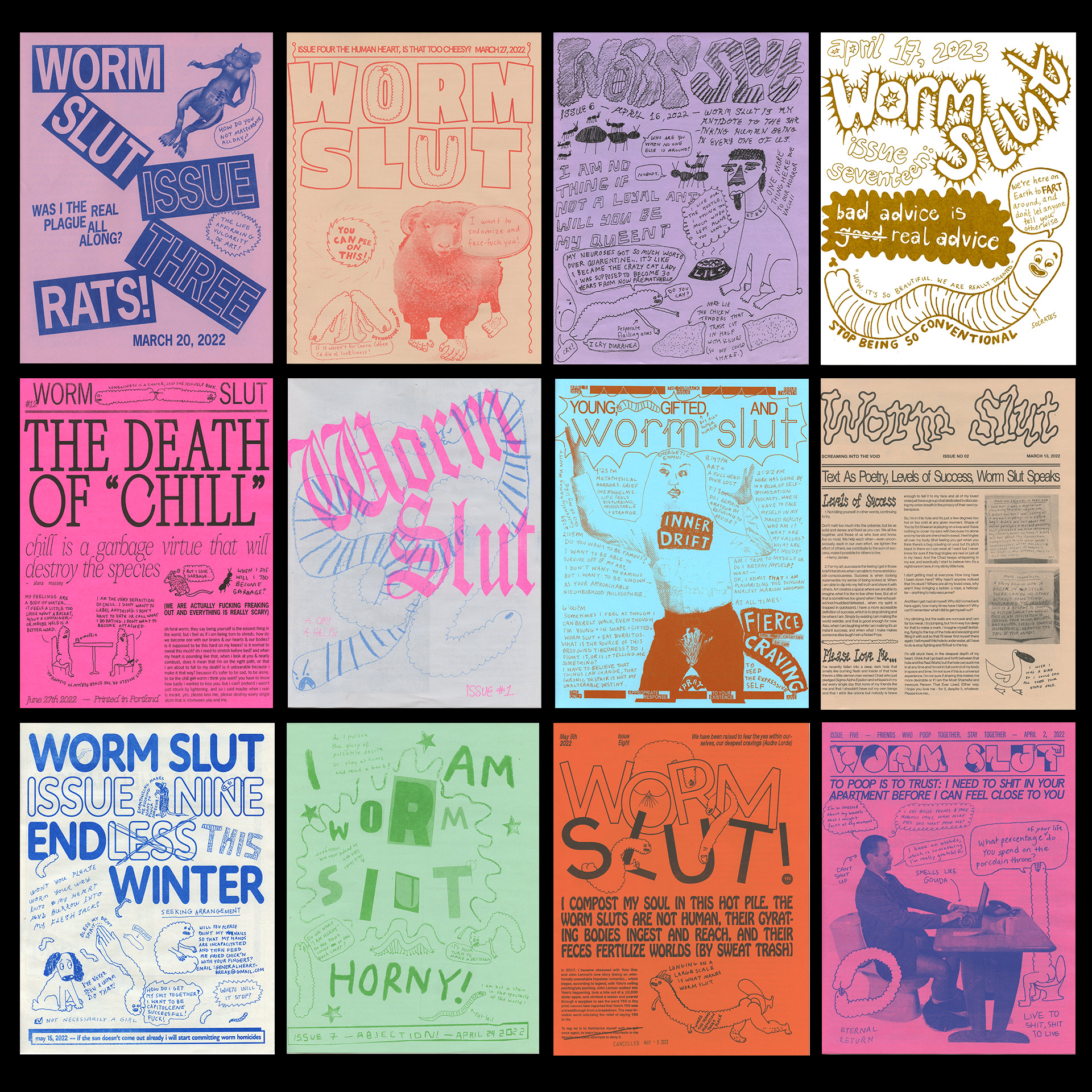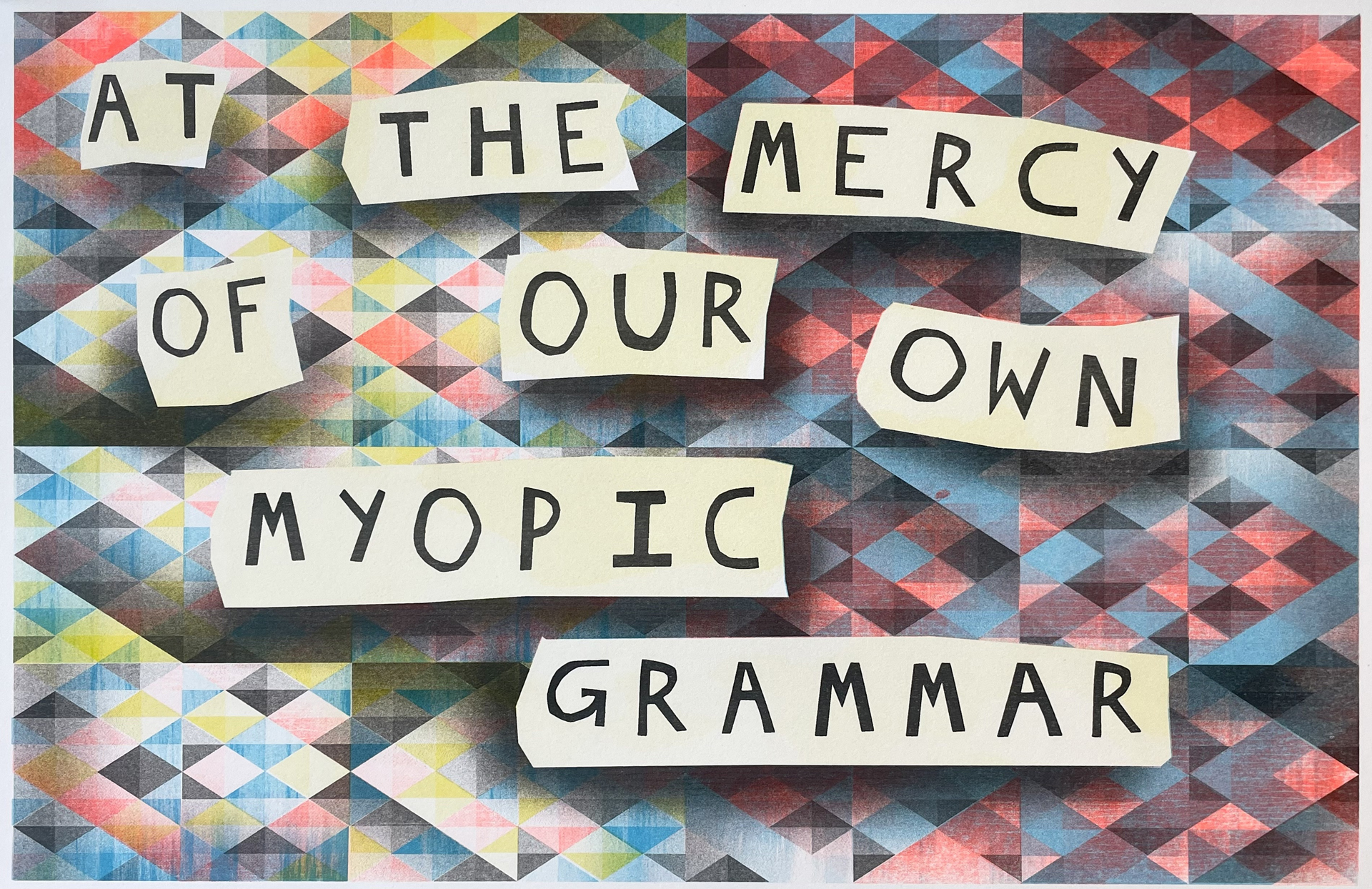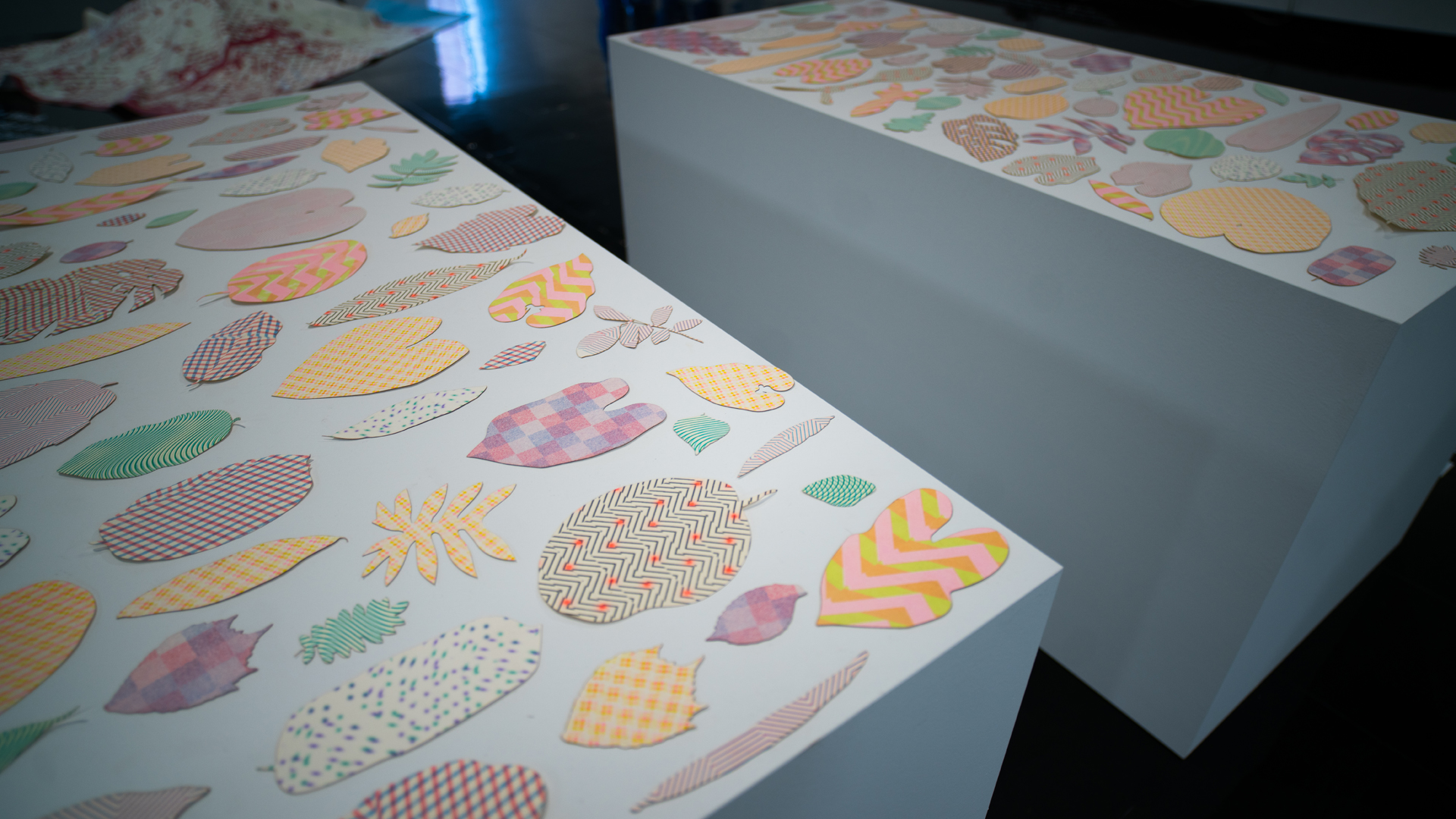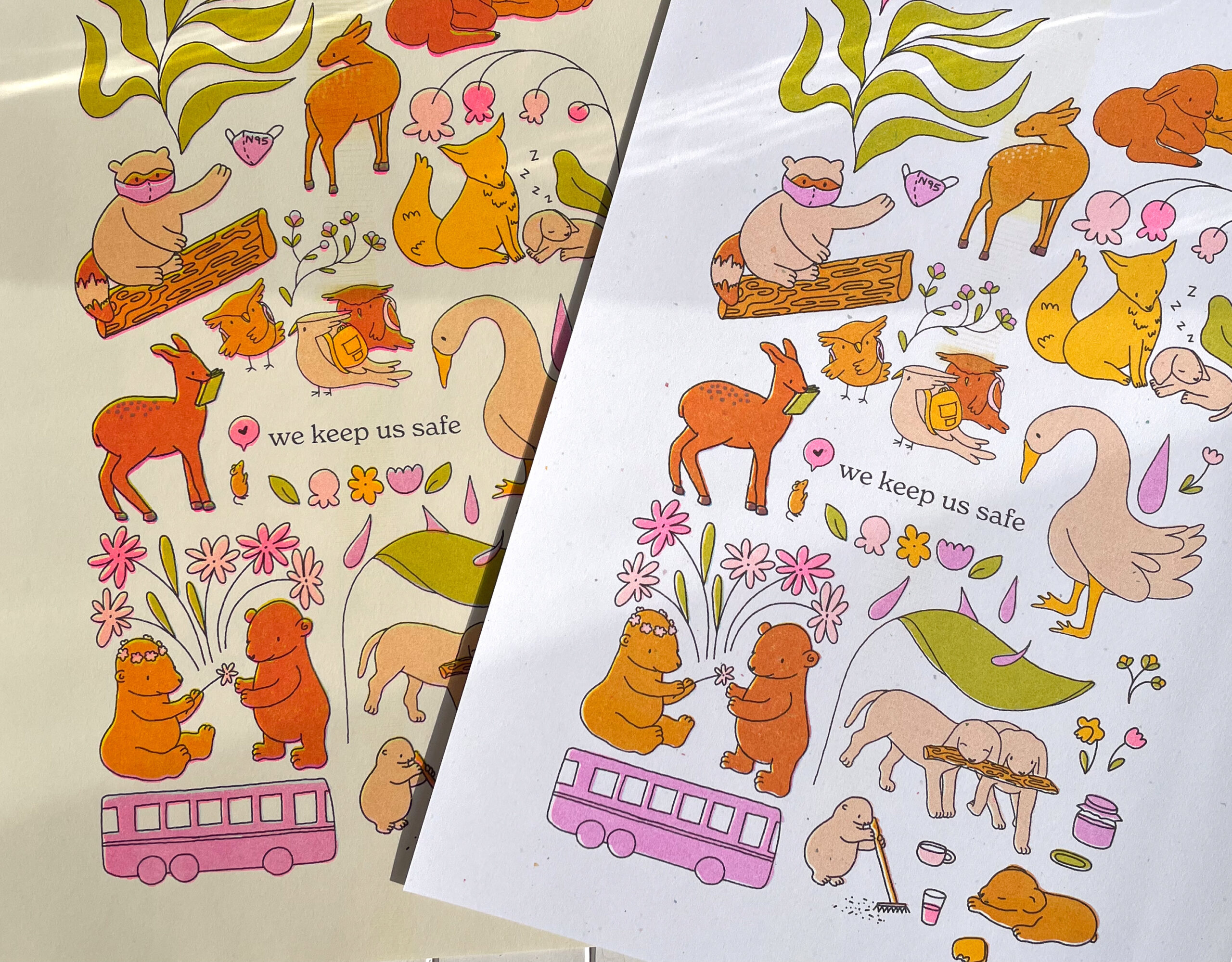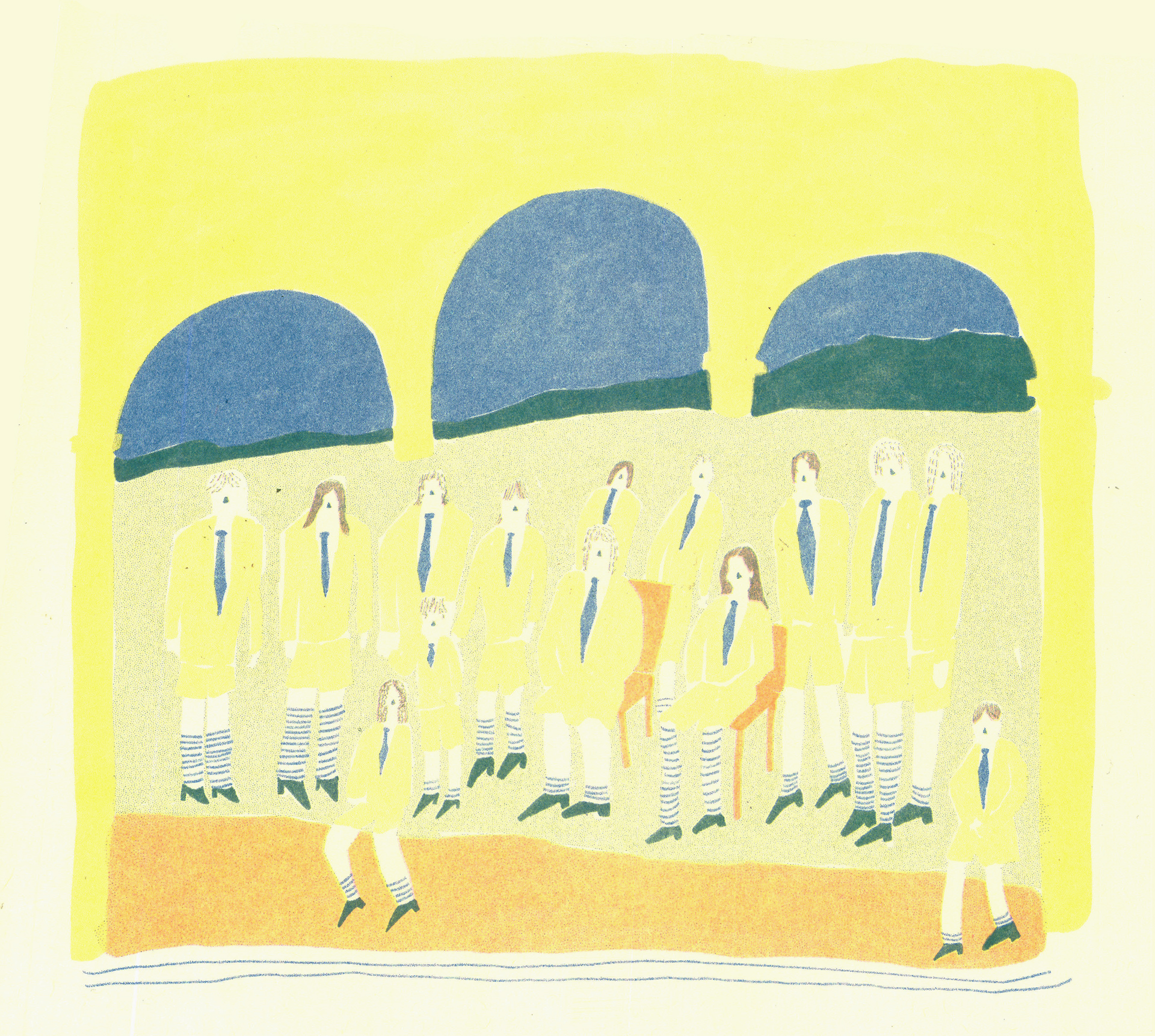Exhibitions
Drum Roll Please: Risography for all!
Exhibition Statement
Impressions of a Novice Risographer
By Blake Sanders
Note: From what I can gather via the nomenclature, a Risograph is the machine, risograph is the medium. I’ll be using them thus below and throughout this edition.
Two tenets act as the matrix and key layer of print theory and philosophy: Build Community and Make Do. Is there anything more integral than that in printmaking? One is the reason we seek out collaborators, keep coming to print conferences, and proselytize about print to anyone who’ll listen. The other is the way we maintain our making habit and innovate in the discipline without breaking the bank or wrecking the planet.
Community is central to print experience. I wouldn’t be a creative if it weren’t for the camaraderie and collaboration printmaking facilitates. Working in close quarters with arcane materials to create en masse to connect with an audience changed my life and I want to share that feeling with others. The edition is key to this kinship. The reproducibility of the matrix allows a more equitable distribution of knowledge and culture. Alas, at the same time we pay lip service to printmaking as the democratic medium, we’re propping up the shibboleths of jargon and aesthetic traditions that can alienate the public. What if there’s a medium that lowers the learning curve, inviting makers who embrace the aesthetic traditions of analog printmaking but without the labor not everyone can afford to give?
Much of the print media we employ in the studio today was cast aside by the commercial sphere in favor of cheaper, more efficient modes of production, then was picked up by thrifty artists looking to up their own graphic output. The ecology and economy of that process of upcycling and reimagining makes me proud to be a printmaker. We work with equipment and materials that are often aged and imperfect and must thus make do, finding fixes and work-arounds to keep making. Call it education or inculcation, a tenacious DIY mindset inoculates the young printmaker against boredom, obsolescence, and poverty. In that tradition, a new (to us) medium enters the arena.
The humble, ingenious Risograph makes printmaking legible, accessible, and relatively cheap to the uninitiated. It allows makers of all stripes the ability to stoke their creativity, disseminating ideas and voices at break neck speeds. Are you a drawer? Publish a weekly comic in minutes! Do you compose on a screen? Bring your output into the physical domain in an aesthetic that is at once nostalgic and entrancing in its fallibility. Struggle to make decisions? Improvise and collage on a Riso flatbed scanner to experiment with low stakes. Don’t think you’re creative at all? Make a risograph and be proven wrong as you make something unique!
The Risograph employs the ease of the copy machine and the layering possibilities of screenprint. It is equally good at reproducing graphic line and subtle value and translucency. The machine translates an original file or scanned image/objects into a high-fidelity positive, eliminating the need to set up halftones yourself. I’m a lithographer at heart so the ease of use was more a bug than a feature to my deliberate mode of working, but I was quickly sold on the flexibility of the machine, and the nuances the layers of soy-based ink were able to achieve. There’s just enough peculiarity and crankiness to each machine I wasn’t turned off by it being too easy! You can make a gnarly punk zine as easily as you can make a sweet, optically dense portrait of your grandma. A good risograph can contain multitudes!
Judging from the student work in particular at recent Open Portfolio sessions many of you readers are way ahead of me and are fully immersed in the risography realm. Drum Roll Please… (referencing the ink drum and the positive film rolls the machines rely on) introduces a selection of risographers who employ the medium to live up to the community building and make do principles I see as sacrosanct to the print ethos. Many create community via collectives who work in collaboration or in parallel, making do with their persnickety Risographs.
Outlet, a vibrant Portland-based risograph press and studio, is especially public facing, offering workshops and publishing opportunities. The exhibition illustrates the commune’s creative hotbed with founders Kate Bingaman-Burt and Leland Vaughan joined by members Michael Vasquez, Nia Musiba, Zab Shadrick, and Miranda Field-Martin. The variety of approaches to risography is inspiring, from Kate’s illustrations of purchases, to Nia’s faithful reimaginings of their figurative paintings, to Miranda’s polished graphic design. The group is linked by a shared expert handling of the medium. Leland’s Unofficial Riso Rules jumps out as the spirit of the collective, evoking Sister Corita Kent’s Ten Rules, to provide their support and Riso wisdom as they’ve learned to stop worrying and love the hiccups inevitable with riso.
Swan Meadow, a queer art cooperative anchored by partners Fern + Mel Meadow, employ the Riso as a means and a metaphor, queering print dogma through encouraging a joyous and expansive idea of creativity, while supporting the queer community in and around St. Louis.
small_bars, the collaborative duo of Ry McCullough and Nick Satinover, brings the Riso out to meet the people to combine print, music, and performance art. The accessibility of the machine furthers their goal of blurring the lines between performer and audience, creating a “generative feedback loop” that sustains artist and audience/collaborators alike.
Nick’s solo work is featured here as well. I’ve long admired his juxtaposition of poetic if enigmatic text and expert handling & color sense in his lithographs. His risos achieve the ambivalence he strives for in a way the control litho requires can’t, perhaps because of the variation and limited saturation the machine can achieve.
David Wischer has embraced risography as a tool to explore the duality of his practice. On the one hand, the medium provides a fun and fast paced vehicle to express humor and nostalgia indicative of his solo work. On the other, he can use the Riso and his graphic design chops to collaborate with and provide service to the public through his work with University of Kentucky’s Aphasia Lab, which researches the language disorder that makes communication difficult. The irony of using a device for rapid communication for this service is not lost on David!
Riso-lve: A Conversation with Josh Dannin is a companion piece to the exhibition. Josh is the proprietor of Directangle Press, settled amongst the stunning White Mountains of New Hampshire, which has hosted 127 artist over the last few years to make do with the studio’s formidable collection of Risograph machines and letterpress & bindery equipment. His commitment to the community of his shop is so complete he chose to highlight work by artists who’ve visited the residency in this exhibition. Even in the interview his work takes a back seat to the hustle of the shop. If you’re interested in setting up a collaborative studio or residency, with or without Riso, Josh provides some insights and stark realities to ponder.
Are you ready to receive risography’s comrades, collectives, and communities? Jump in to the exhibition via the links below!

Graphic Impressions is published by SGC International. SGC International is an educational non-profit organization committed to informing our membership about issues and processes concerning original prints, drawings, book arts, and handmade paper.
Graphic Impressions Updates
Submissions
We encourage your submissions to Graphic Impressions. Submission types include:
- Feature articles
- Reviews
- Interviews
- Studio visits
- Exhibitions
- Demonstrations or process-based content
